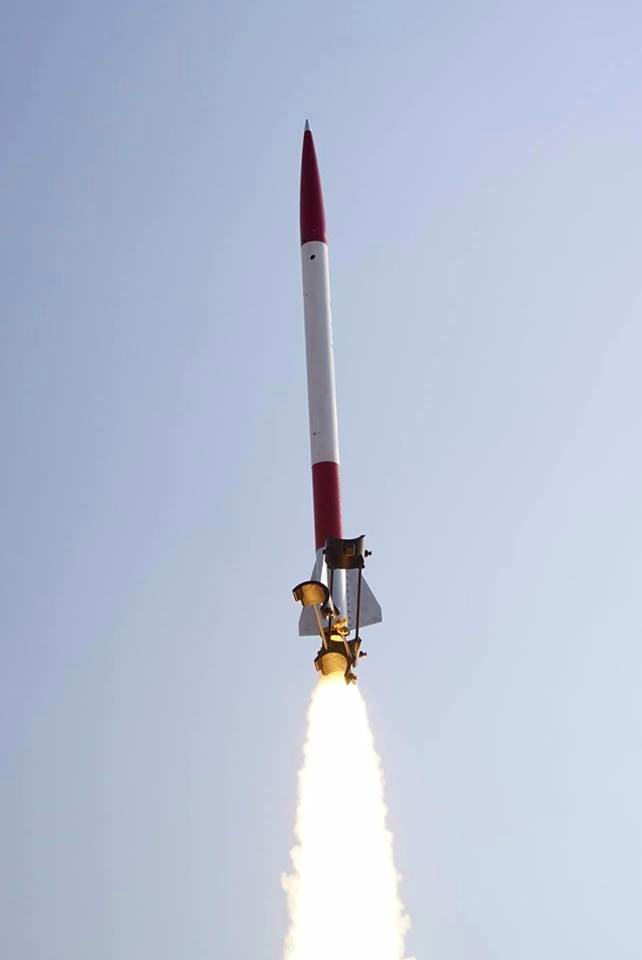Overview
Project Virgo was an entry in IREC 2017 in the SRAD Solid 30k ft category. Virgo had an emphasis on legacy and COTS solutions. Virgo was conceived during a long car ride as a project for LDRS 36 at MDRA. It was quickly discovered that using any significant fraction of Virgo's motor load would bust the 14,000 ft waiver. It was then conceived to fly Virgo as an entry at IREC, the first time MIT Rocket Team would have two separate entries.
Flight History:
| Flight | Vehicle | Motor | Launch Site | Date | Result |
|---|---|---|---|---|---|
| Virgo 1 | K1085 | Berwick | April 23, 2017 | Success | |
| Flight 2 | Virgo 1 | N2000 | Spaceport America | June 24, 2017 | Main Anomaly |
Vehicles:
Virgo 1
Virgo 1 was constructed using surplus components in lab. It used filament wound carbon fiber from Project Odyssey and a motor case from Odin's Spear. The fin can was a COTS aluminum fin can from Binder Design. It uses a CO2 Discharge Device to deploy a streamer at apogee and 1g black powder charge to deploy a 6ft main parachute at 800 ft. The avionics bay borrowed heavily from Project Raziel's design. It uses one Telemetrum 2.0 and one Pyxida for avionics. Virgo 1 flew twice before being destroyed on landing at Spaceport America. Virgo 1 used a SRAD fly-away rail guide to fit on standard 1515 rail. |
Spaceport America Cup 2017
Deliverables Here
